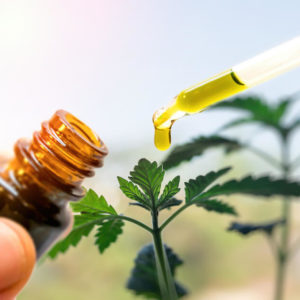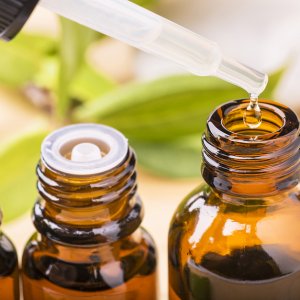Last month I somehow got into poison ivy. The rash started in a few small places on my arms and quickly spread to my chest, face, and thighs. During this unbearable battle, I tried so many different types of natural remedies for poison ivy. Want to know if any of them really work?
What exactly is poison ivy rash?
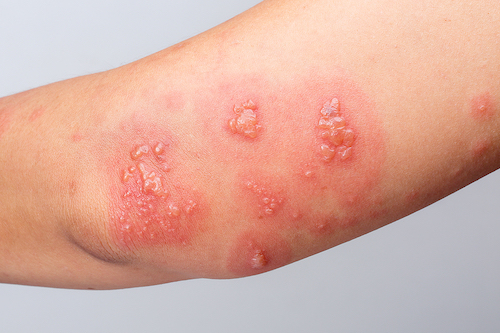
Poison ivy rash is caused by the plant toxin, urushiol. This natural poison causes swelling, blisters, burning, pain and an astounding amount of itching. A severe rash can be extremely uncomfortable and may present significant health risk.
All parts of the poison ivy plant (Toxicodendron radicans), including the roots, leaves and stems, produce a sap that contains urushiol. The sticky oil adheres to many things—clothing, garden tools, and even pets—making it very easy to transmit. When urushiol comes in contact with abundant Langerhans cells in the skin, it triggers an immune response. During this chain-reaction process, CD1a molecules activate T cells, which then produce interleukin 17 and interleukin 22. To the non-sciency types, basically this means you get a nasty rash.
After exposure to the oil, a rash may develop within a few hours, but some say it can take as long as 48 hours to show up. So imagine you unknowingly get the oil on your hand. You may touch many other body parts and even other people before you are even aware you have it.
Preventing the rash
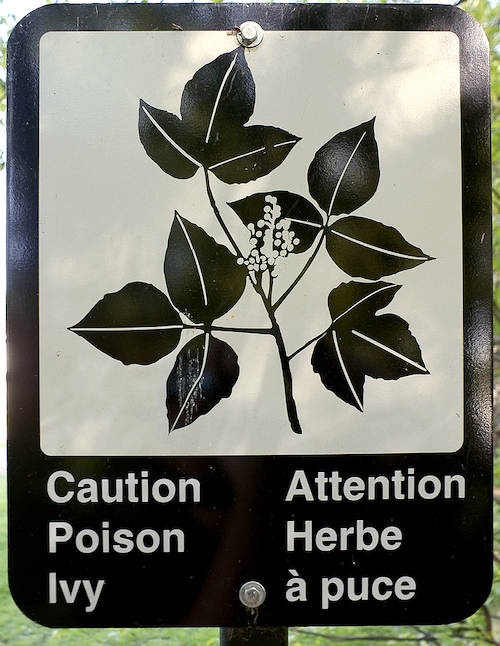
Obviously, avoiding plants and clearing them from your yard is ideal. Learn how to identify the plant and remove it as soon as possible. To kill poison ivy plants, you can purchase a chemical herbicide or research natural ways to get rid of it. But beware: Even when the plant is dead, the urushiol is still active. Use extreme caution when bagging dead plants and NEVER burn living or dead poison ivy plants. Burning the plants releases the oil into the air to be inhaled. Inhalation is a potentially life-threatening type of poison ivy exposure. Mowing over the plants can also release dangerous plant fragments and oils into the air.
If you do come in contact with poison ivy, the best prevention is to wash off the oil as quickly as possible. Use very hot water and scrub any contaminated area vigorously with a wash cloth to make sure you remove all of it. Remember the oil is very sticky, so scrubbing with an oil-repelling dish soap is recommended.
Even if you are unsure whether you have touched poison ivy, if you spend time working outdoors where poison ivy is present, it’s a good idea to scrub thoroughly. You may also want to dispose of contaminated clothing or gardening gloves because the oil can stick around for a long time (some sources say up to 5 years!)
Natural Remedies for Poison Ivy
So you have poison ivy. Here is a list of some remedies that may help bring relief to the itching and burning.
Baking soda
Baking soda is alkaline and may help to draw some of the poison out of the blisters. Create a paste with 3 teaspoons baking soda and 1 teaspoon of water. Apply to affected areas and allow to dry and flake off. You can repeat this as many times as you’d like if it brings relief.
Apple cider vinegar
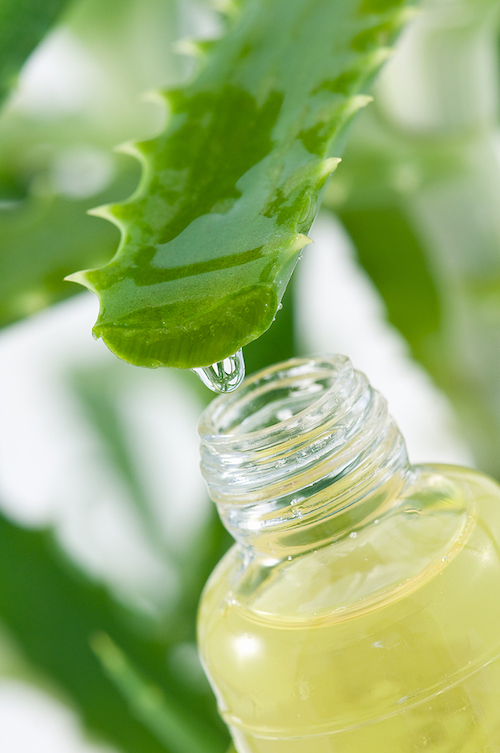
Some sources say ACV has a toxin-pulling action that helps draw poison out of pores. You can apply it straight to poison ivy sores or dilute it with a bit of water.
Aloe vera
Aloe is extremely cooling and may help soothe burning lesions from poison ivy. It also helps to keep the skin moist, which can speed the healing process. Fresh aloe from a plant is best, but aloe vera gel works as well.
Witch hazel
Witch hazel has anti-inflammatory properties and may soothe rashes and speed healing. You can apply it neat to affected areas or use it with a compress.
Essential Oils
Certain essential oils can soothe rashes and help prevent infection. Essential oils that soothe the skin include lavender, frankincense, geranium, rose, and myrrh. Peppermint, tea tree, and eucalyptus can also provide cooling relief.
Bentonite Clay
Bentonite clay binds to other molecules, and may pull some of the urushiol toxin from the skin. Create a paste with the dry clay and water and pack it on lesions.
Over-the-Counter Cortisone Creams/Gels
Cortisone is a mild steroid that helps reduce the body’s reaction to allergens, thereby decreasing inflammation and itching. As with any steroid, using the cream carries some potential side effects, but it may provide some relief to poison ivy blisters.

Systemic Poison Ivy
Sometimes—such as in my case—poison ivy can become a systemic reaction. Unlike a typical reaction, which causes a localized rash on the skin where contact took place, a systemic reaction is not isolated to one area. Rashes may spread all over the body, including areas with no direct contact with the plant or oil. The most common reason for a systemic poison ivy reaction is inhalation of urushiol. However, some people are so sensitive to the toxin that when it binds to the Langerhan’s cells, it penetrates cell membranes and transmits to other areas of the body. Let me tell you: This is the worst.
If you develop new patches of poison ivy more than 2-3 days after the initial exposure, there’s a good chance it’s gone systemic. This is a whole other ball game, people. Just as the initial rashes begin to heal and improve, new ones will pop up all over the body. For some reason, it seems to favor tender areas, such as under the arms, the groin, behind the knees, and even eyelids and inside the ears! The natural remedies for poison ivy listed above may offer some comfort for lesions, but they will not stop the spread if the toxin is in your cells.
When All Else Fails
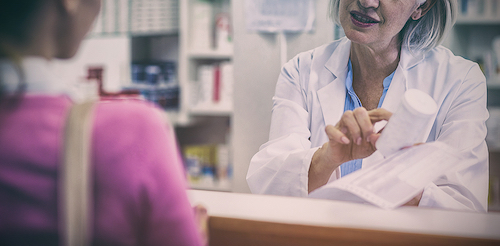
When my case of poison ivy became too much to bear, I finally acquiesced and took a corticosteroid. This requires a doctor’s prescription, but when you have a full-blown case of systemic poison ivy, there are few things you won’t do for relief.
If you use a steroid, such as prednisone, follow your doctor’s orders closely and monitor for side effects. When you take a steroid, your body stops producing its own, so it is always necessary to wean off gradually to allow your immune system to compensate as the steroid is withdrawn.
Need a soothing bath soak to relieve the itch? Try this Calming Waters Bath Soak.





